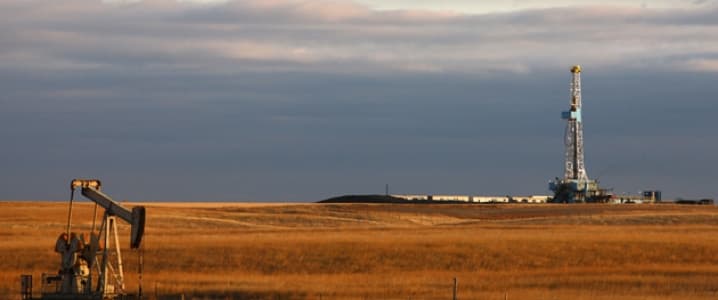The top shale basins in the U.S. could lose another 30,000 barrels per day in November, as a shortage of drilling fails to offset natural depletion. However, the decline is the smallest monthly drop off in a year and a half, a sign that the worst losses could be nearing an end.
In fact, while the Eagle Ford is slated to lose 35,000 barrels per day and the Bakken is expected to lose another 21,000 barrels per day in November, the Permian Basin in West Texas is actually projected to add another 30,000 barrels per day, which could take output to record levels – over 2 million barrels per day.
Behind the uptick in output in the Permian is a remarkable land rush, as capital and equipment continues to flow into the basin. In the past two weeks alone a few major acquisitions were announced – SM Energy agreed to pay $1.6 billion to acquire acreage in the Permian, a deal which works out to about $42,000 per acre. On the same day, SM Energy also announced its decision to sell off $785 million worth of assets in North Dakota. The simultaneous deals illustrate SM Energy’s priorities: get out of other shale basins and go all in on the Permian. A few days earlier, Dallas-based RSP Permian spent $2.4 billion on Permian acreage, or about $47,000 per acre. The skyrocketing land prices are a result of the scramble for acreage in Texas.
The Permian has become so prized because of the multiple stacked formations that offer drillers more oil and gas per given well. That lowers breakeven costs and allows companies to turn a profit even at today’s low prices.
But another reason that the Permian Basin, and the U.S. shale industry more generally, has held up well at $50 per barrel is that drilling techniques continue to evolve. Bloomberg reports that the length of laterals that drillers are employing is growing, allowing even more oil and gas to be squeezed out of a well. “The average length of laterals has increased by hundreds of feet in both oil- and gas-bearing rock this year, with an unofficial record 18,544 feet, about 3.5 miles, claimed by a well in Ohio,” Jim Polson and David Wethe of Bloomberg write.
And because so much of the cost of a well is fixed and upfront extending laterals can dramatically boost returns. The cost of constructing the well and renting equipment does not change, so extending a lateral poses few additional costs while significantly boosting production. For example, doubling the length of a lateral from 5,000 to 10,000 feet can make a well four and a half times more valuable, SM Energy’s Herbert Vogel told Bloomberg. More and more drillers are extending laterals, and that continues to lower the breakeven costs for wells drilled. Related: Iran To Offer 50 Oil And Gas Projects In Upcoming Tender
Another technique that drillers are utilizing to extract ever greater quantities of oil and gas is pumping more frac sand into wells. The average amount of sand used in fracking has doubled since 2014, Bloomberg says. But Chesapeake Energy is pushing the bounds on the use of frac sand. The Oklahoma City-based company told an industry conference on October 20 that it pumped a gargantuan 25,000 tons of sand down a single natural gas well in Louisiana, a process that it dubbed “propageddon.” The massive volume of sand led to a 70 percent increase in oil and gas production. “What we’re doing is unleashing hell on every gas molecule downhole,” said Jason Pigott, Chesapeake’s vice president of operations. Indeed.
Supersizing frack jobs is especially advantageous in today’s business environment because the cost of oilfield services has plummeted. Halliburton, the world’s second largest oilfield services company, conducted the propageddon frack job for Chesapeake. Halliburton barely turned a profit in the third quarter as drilling continues to remain moribund across the continent. As oil prices rise and drilling picks up, the cost to employ the services of companies like Halliburton will rise.
Evolving drilling techniques have slowed the pace of decline in U.S. oil production. Confirmed monthly oil production figures for the U.S. show output falling to 8.68 million barrels per day in July. More recent, but less reliable, weekly estimates show only small declines through October. It remains to be seen if output is about to bottom out, but the EIA expects the U.S. to average 8.6 mb/d in 2017, not much changed from current levels. If output stops falling, a large reason for that will be due to improved drilling methods.
By Nick Cunningham of Oilprice.com
More Top Reads From Oilprice.com:
- Oil Titans Differ On Whether Prices Will Spike Or Remain Low
- U.S. Oil And Gas Is Changing To Survive
- The Drone War Is On: Australian Startup Beats Google, Amazon


















